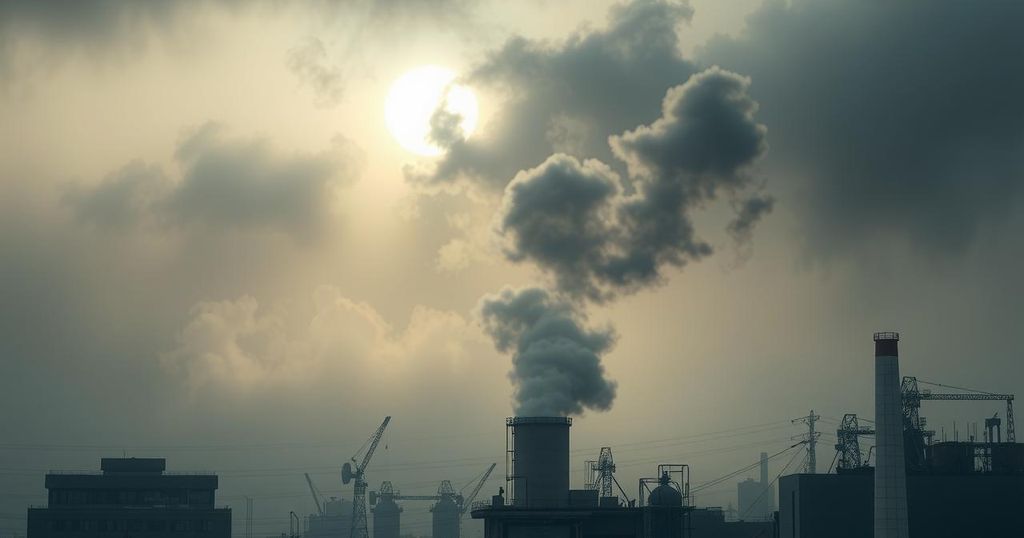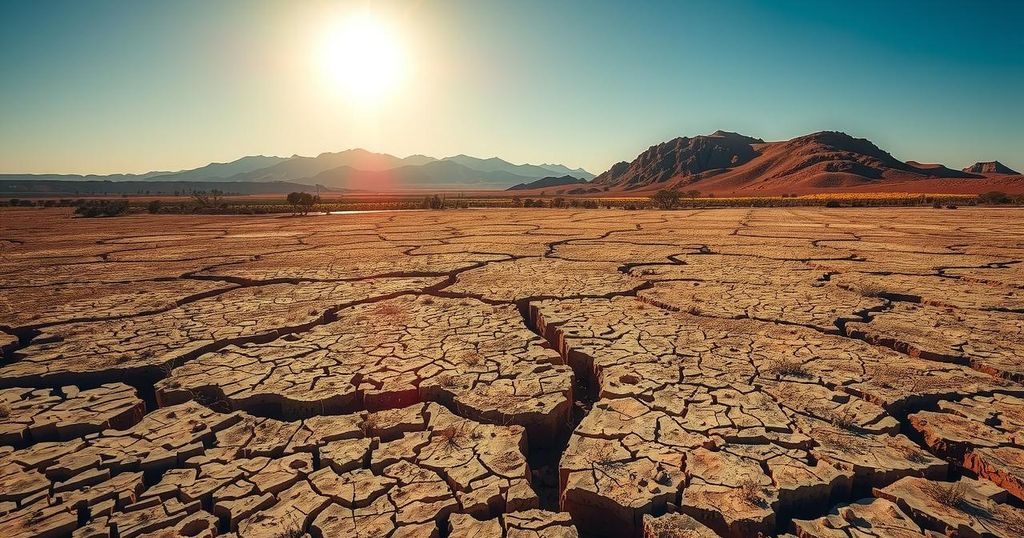Climate change
AFRICA, AIR QUALITY, ASIA, ASSAM, AUSTRALIA, BAHAMAS, BANGLADESH, BARBADOS, BY, BYRNIHAT, CHAD, CLIMATE, CLIMATE CHANGE, CUBA, DEMOCRATIC REPUBLIC OF THE CONGO, DHAKA, ENVIRONMENTAL DAMAGE, ESTONIA, EUROPE, GRENADA, ICELAND, INDIA, IQAIR, IQAIR GLOBAL, MEGHALAYA, N ’ DJAMENA, NEW DELHI, NEW ZEALAND, NORTH AMERICA, OCEANIA, PAKISTAN, PARIS AGREEMENT, UNITED STATES, WHO
Jamal Walker
0 Comments
Analysis of India’s PM2.5 Air Quality in 2024: Alarming Trends and Insights
The IQAir 2024 report indicates India’s PM2.5 levels are 10 times the WHO safe limit, at 50.6 µg/m³. Only 17% of global cities and seven countries met WHO standards. New Delhi’s air quality remains alarming, with health advocates emphasizing the need for effective policies amid continued industrial pollution and inadequate public transport systems.
According to the seventh annual IQAir report, India’s annual PM2.5 concentration in 2024 was alarmingly high at 50.6 micrograms per cubic meter (µg/m³), more than ten times the World Health Organization’s (WHO) recommended limit of 5 µg/m³. This figure shows a marginal improvement from 54.4 µg/m³ in 2023 but still reflects critical air quality issues in the country.
Fine inhalable particles, known as PM2.5, have diameters of 2.5 micrometers or smaller. The IQAir report focuses specifically on PM2.5, though air quality assessments also consider other pollutants, including PM10, sulfur dioxide (SO2), nitrogen dioxide (NO2), carbon monoxide (CO), and ozone (O3).
The report highlighted that only 17% of global cities, alongside just seven countries—Australia, the Bahamas, Barbados, Estonia, Grenada, Iceland, and New Zealand—met the WHO guidelines for PM2.5. In comparison, India ranked poorly against various other nations, including Chad (91.8 µg/m³), Bangladesh (78 µg/m³), and Pakistan (73.7 µg/m³).
Byrnihat, situated near the Assam-Meghalaya border, recorded the highest annual PM2.5 concentration at 128.2 µg/m³. New Delhi’s concentration was recorded at 91.8 µg/m³, notably higher than that of N’Djamena, Chad’s capital (91.6 µg/m³), and Dhaka, Bangladesh (78 µg/m³).
IQAir’s global CEO, Frank Hammes, emphasized the seriousness of air pollution, stating, “Air quality data saves lives. It creates much-needed awareness, informs policy decisions, guides public health interventions, and empowers communities to take action to reduce air pollution and protect future generations.”
Faridabad reported a PM2.5 concentration of 101.2 µg/m³ and Gurugram at 87.5 µg/m³. However, India’s overall PM2.5 levels did show a 7% decline in 2024 compared to the previous year. Factors contributing to this poor air quality include rapid industrialization, unchecked vehicular emissions, and construction activities.
Vijay Choudhary, a regional officer with the Haryana State Pollution Control Board, pointed out that emissions control remains challenging. He noted, “We have implemented measures, including restrictions on industrial emissions and better waste management. The city’s geographical location exacerbates pollution during winter, leading to frequent smog episodes.”
Advocacy group leader Gauri Sareen criticized the slow response to air quality issues, stating that vulnerable populations, particularly children and the elderly, are suffering from respiratory illnesses due to prolonged exposure to polluted air. Greenpeace India campaign director Avinash Chanchal added that inadequate public transportation infrastructure perpetuates pollution issues, urging that improvements in public transport should be prioritized in tackling air quality problems.
In summary, India’s PM2.5 concentration remains critically high, surpassing safe limits, as revealed in the IQAir 2024 report. Despite a slight decrease from the previous year, systemic issues such as industrial emissions, vehicular pollution, and ineffective public transport infrastructure significantly impede air quality improvement efforts. Immediate and effective policy interventions, alongside community awareness initiatives, are necessary to safeguard public health and provide cleaner air for future generations.
Original Source: www.hindustantimes.com




Post Comment